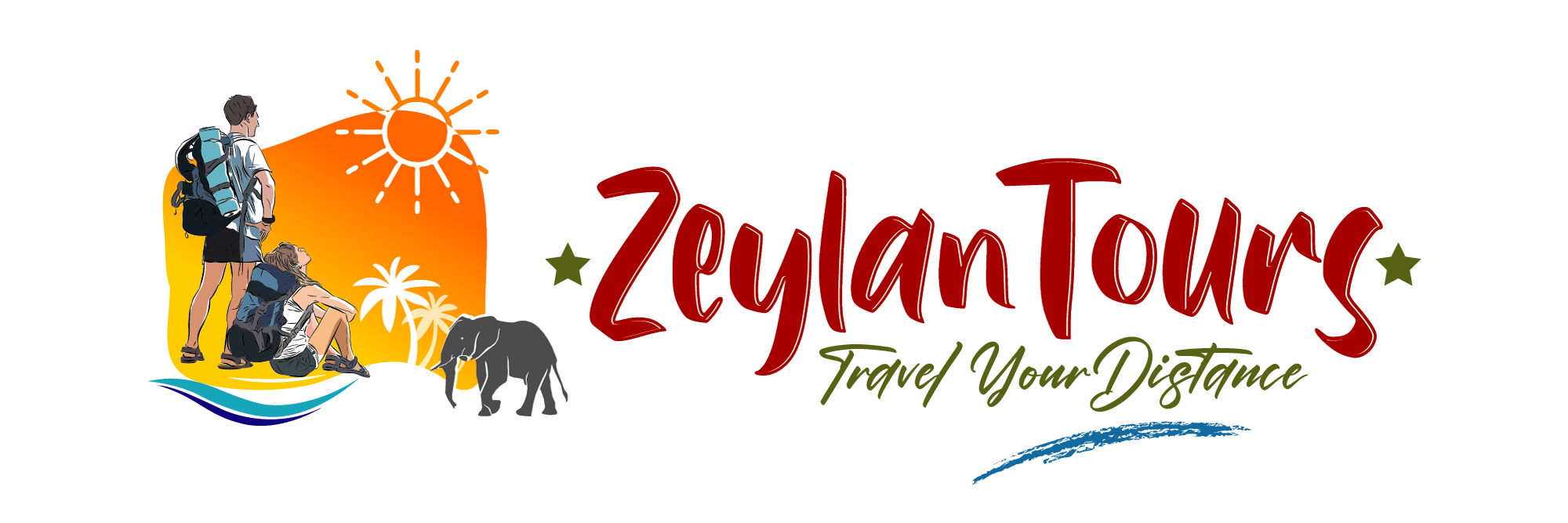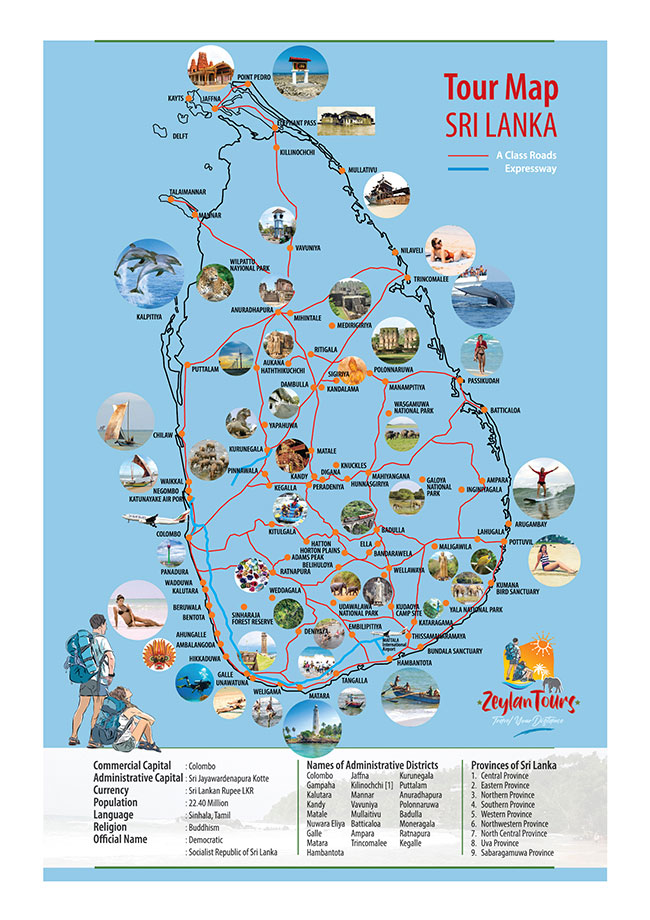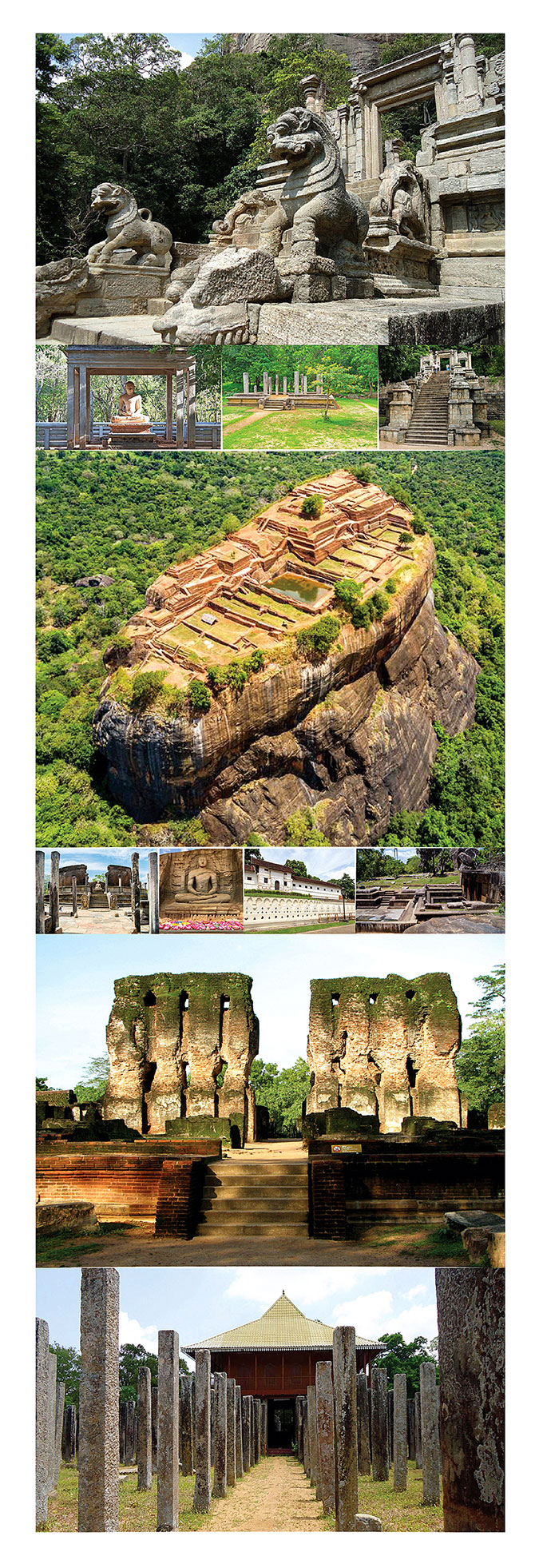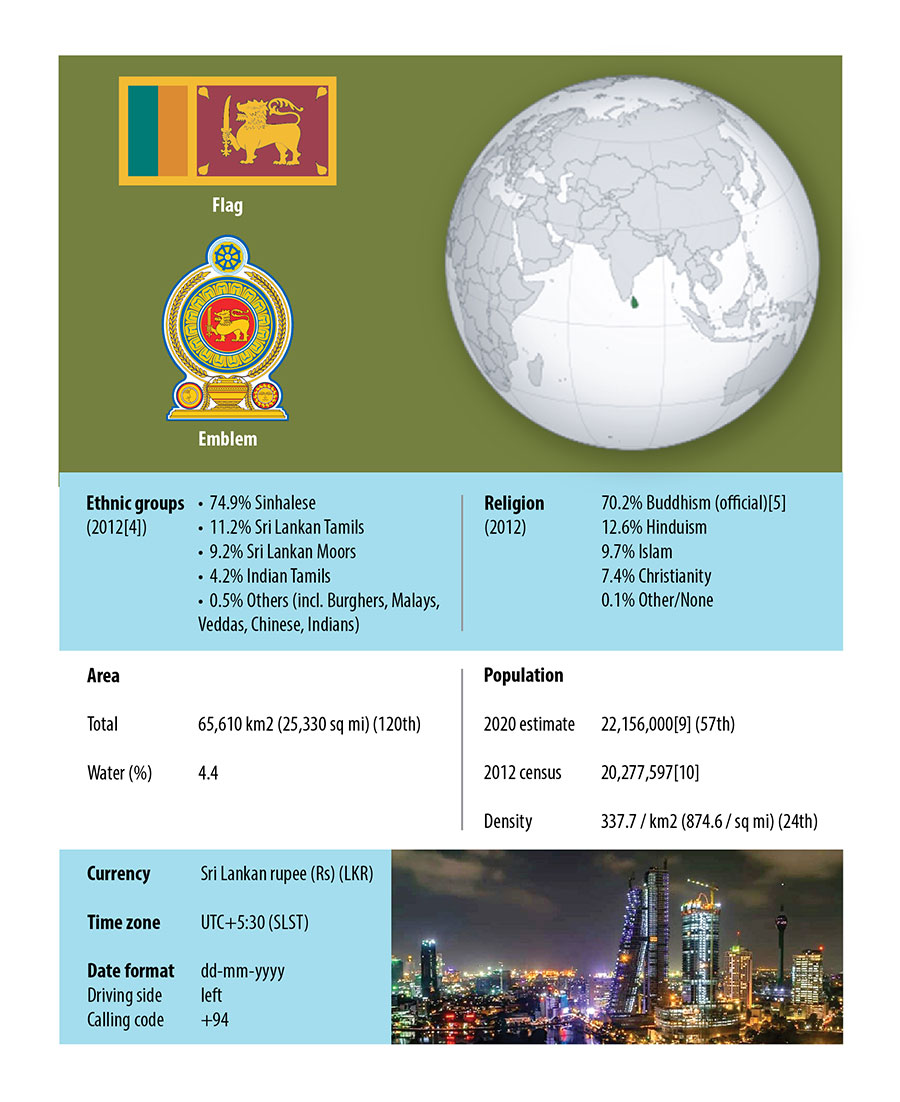Overview
Sri Lanka is a place to make your travel dreams come true. Whether you are looking for adventures visiting spectacular wilderness and animal sanctuaries, surfing at world-class beaches, exploring the rich cultural heritage and historic temples or just sitting back and taking in the views of this unique tropical paradise, Zeylan Tours can turn your travel dreams into a beautiful reality.
When Marco Polo visited Sri Lanka (Ceylon) in 1293, he said of this island paradise:
“for its size, it is better circumstanced than any island in the world”
Let Zeylan Tours make your visit to Sri Lanka just as memorable.
About Sri Lanka (Ceylon): What EveryTraveler Should Know
Location & Physical features: It’s the Perfect Size to Explore
First where is this beautiful place. Sri Lanka is an island in the Indian Ocean located to the south of the Indian sub-continent. It’s like a beautiful jewel hanging off the tip of Southern India. It is essentially on the equator. It is easily reached by flights from Singapore, Bangkok, Australia, Europe, Asia and the USA. Its an island with a total land area of 65,610 sq.km. (25.3 thousand sq. miles). This beautiful island is not a drop in the ocean. It has a length of 445 km (276 miles) and breadth of 225.3 km (140 miles) and encompasses beautiful beaches, lush green vegetation, ancient buildings and a thousand delights to please all tastes. The island consists of a mountainous region somewhat south of center, with heights exceeding 2,500 meters, surrounded by broad plains. Lovely palm-fringed beaches surround the island and the sea temperature rarely falls below 27 C
Climate and Seasons
The climate is basically tropical with temperatures averaging 27°C in Colombo. Although seasonal rains can be heavy, generally bright, sunny and warm days are the rule and are also common even during the height of the monsoon seasons. Sri Lanka really does not have an offseason. At the higher elevations it can be quite cool with temperatures going down to 16°C in places like Nuwara Eliya which has an altitude of 1,890 meters. Sri Lanka has two monsoons plus it get rains from general weather systems during the year. The south-west monsoon brings rain mainly from May to July to the western, southern and central regions of the island. The north-east monsoon rains, occur in the northern and eastern regions in December and January.
History
The history of Sri Lanka goes back to pre-historic times. Recent excavations show that even during the Neolithic Age in Sri Lanka there were food- gatherers and rice cultivators. Very little is known of this period and documented history began with the arrival of the Aryans from North India. The Aryans introduced the use of iron and an advanced form of agriculture through a rudimentary system of irrigation. They also introduced the art of government. Of the Aryan settlements, Anuradhapura grew into a powerful kingdom under the rule of Pandukabhaya. According to traditional history, he is accepted as the founder of Anuradhapura.
During the reign of King Devanampiya Tissa, a descendent of Pandukabhaya, Buddhism was introduced in 247 B.C. by Arahat Mahinda, the son of Emperor Asoka of India. This is the most important event in Sri Lankan history as it set the country on the road to cultural greatness.
In the mid 2nd century B.C. a large part of north Sri Lanka came under the rule of an invader from South India. From the beginning of the Christian era and up to the end of the 4th century A.D., Sri Lanka was governed by an unbroken dynasty called Lambakarna, which paid great attention to the development of irrigation. A great king of this dynasty was King Mahasen (3rd century A.D.) who started the construction of large ‘tanks’ (reservoirs) which in turn fed smaller reservoirs. Another great ‘tank’ builder was Dhatusena, who was put to death by his son Kasyapa, who made Sigiriya a royal city with his fortress capital on the summit of the rock.
As a result of invasions from South India the Kingdom of Anuradhapura fell by the end of the 10th century A.D. Vijayabahu I repulsed the invaders and established his capital at Polonnaruwa in the 11th century A.D. Other great kings of Polonnaruwa were Parakrama Bahu the Great and Nissanka Malla both of whom adorned the city with numerous buildings of architectural beauty.
Invasions continued intermittently and the capital was moved constantly until the Portuguese arrived in 1505 when the chief city was established at Kotte, in the western lowlands. The Portuguese came to trade in spices, but stayed to rule until 1658 in the coastal regions, as did the Dutch thereafter. Dutch rule lasted from 1658 to 1796, in which year they were displaced by the British. During this period, the highland Kingdom, with its capital in Kandy, retained its independence despite repeated assaults by foreign powers who ruled the rest of the country. In 1815 the Kingdom of Kandy was ceded to the British and thus they established their rule over the whole island. Modern communications, western medical services, education in English, as well as the plantation industry (first coffee, then tea, rubber and coconut) developed during British rule. By a process of peaceful, constitutional evolution, Sri Lanka won back her independence in 1948 and is now a sovereign republic, with membership in the commonwealth of Nations and the United Nations Organization.
Economy
Sri Lanka is mainly an agricultural country. The chief crop is rice in which the country is almost self-sufficient. Tea, rubber and coconut form the next important agricultural crops, with tea being the major foreign exchange earner. In addition, other important crops are cocoa and spices such as cinnamon, cardamon, nutmeg, pepper and cloves. Fruit and vegetables, native to both tropical and temperate regions, grow well in Sri Lanka and today form a considerable proportion of our exports. Sri Lanka is also a major exporter of precious and semi-precious stones. Within the last few years remittances from Sri Lankans employed abroad have contributed a share towards foreign exchange earnings.
The last decade has seen tourism emerge as an important foreign exchange earner. There has also been a rapid growth in manufacturing industries which offer a wide range of exportable goods such as petroleum products, leather goods, ready-made garments and electronic equipment.
The People
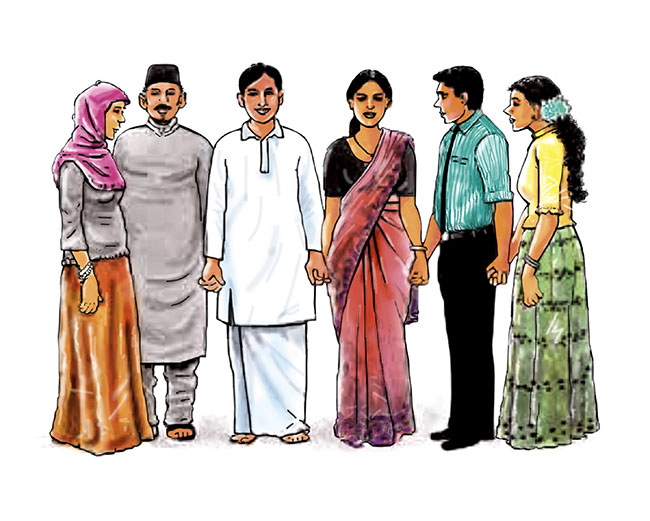
Sri Lanka has a population of 22million of whom the majority are Sinhalese. Other ethnic groups are made ‘up of — Sri Lankan Tamils, Indian Tamils, Moors, Malays & Burghers (of Portuguese & Dutch descent) and others,
Although Sri Lanka is a multi-religious country Buddhists constitute the majority with 70.2. Other religious groups are Hindus 12.6%, Muslims 9.7% and Christians 7.4%. Sri Lanka’s literacy rate of 86.5% is one of the highest in Asia.
Language
Sinhala, a language of Indo Aryan origin, is used by the majority and is the official language of the country. The Dravidian tongue, Tamil, is used mainly in the northern and eastern regions. English is widely spoken and understood. Place names and sign-boards on buses and trains are in the national languages and in English. Sri Lankans are very kind and friendly towards visitors and will be happy to assist you.
Government
Sri Lanka is a free, sovereign, independent and democratic socialist republic and is known as the Democratic Socialist Republic of Sri Lanka. The country is divided into 25 administrative districts. Legislative power is exercised by’ Parliament, elected by universal franchise on a proportional representation basis. Executive power of the people, including defense, is exercised by the President who is also elected by the people. The minimum voting age is eighteen years.
Religion: Is an Important Part of Sri Lankans Identity
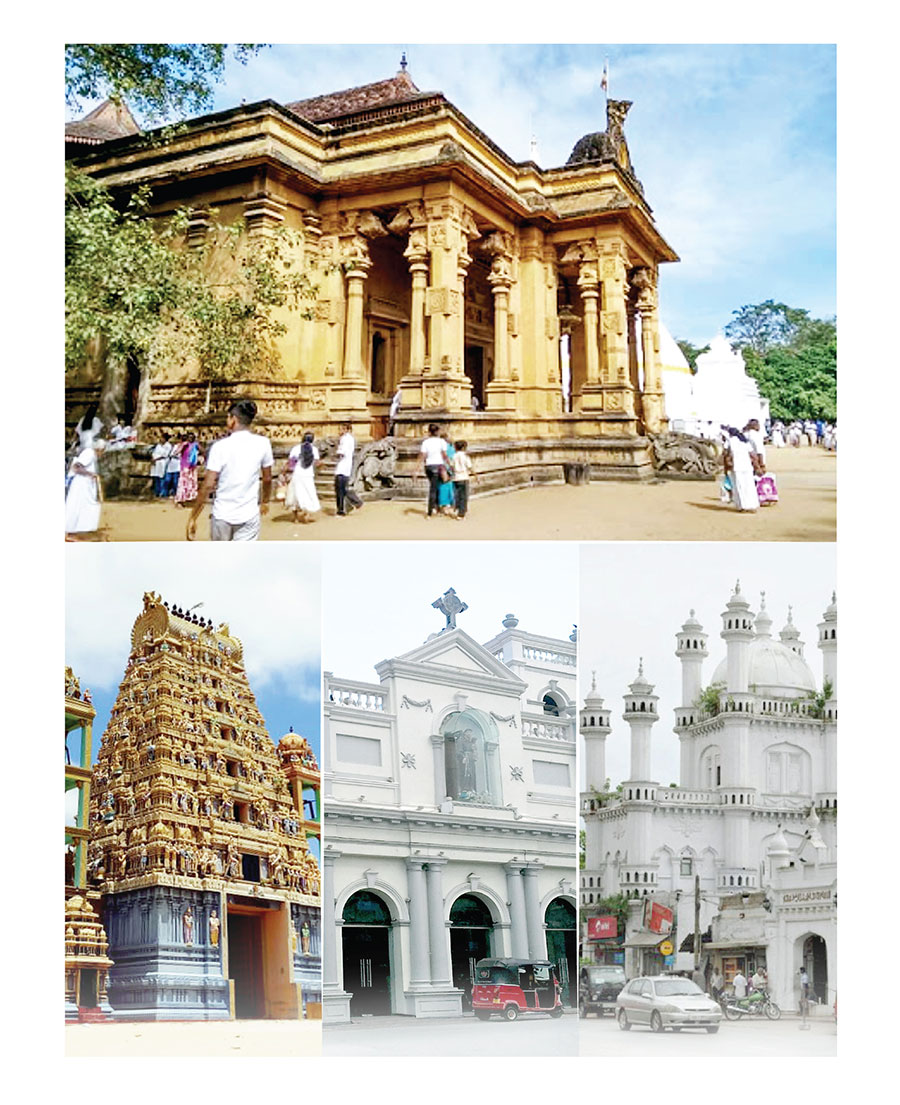
Buddhism
By far the majority of Sri Lankans are Buddhists and you will find manifestations of this faith throughout the island in the form of Buddha statues, monuments, sculptures, stupas, etc. Introduced into the country over 2,200 years ago, Buddhism is maintained in its purest form. Take time to find out more about Buddhism during your stay with us. Information is available from the Buddhist Information Centre, 50, Ananda Coomaraswamy Mawatha, Colombo 7. Tel: 23079;
Hinduism
There are many Hindu Kovils in Sri Lanka and this religion is mainly practiced by the Tamil population.
Christianity
Catholic as well as non-Catholic denominations, such as Anglican (Church of England), Presbyterian, Methodist and Adventist Churches all hold regular services. Hotel front desks or the travel information center (TIC) will supply further information.
Islam
Many mosques can be found in Sri Lanka including some very modern ones. The TIC will be pleased to assist you in your requirements.
Colombo
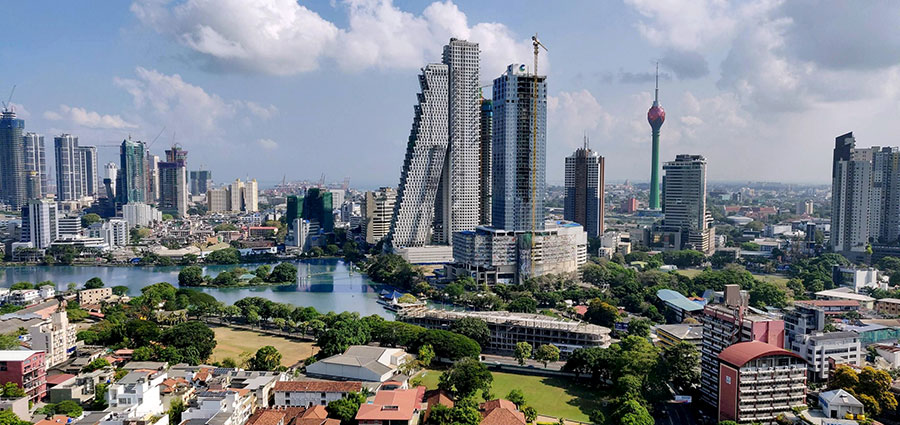
Sri Lanka’s capital up to recent times, Colombo is a fascinating city, not only for a comfortable blend of East and West, but also a cozy mixture of the past and present. It is still the commercial center of the country. Situated 34 km. from Katunayake International Airport, Colombo has been a flourishing seaport for centuries; from the time when ancient seafarers from Cathay, Persia and Morocco traded in pearls, precious stones, elephants and peacocks, cinnamon and other spices. Today the bustle of the harbor mingles with the activity of its busy commercial, banking and shopping areas. The original trading settlers — the Portuguese, Dutch and the British have all left in their wake churches and monuments, names and religions, costumes and food…and smatterings of their languages which have been absorbed into the speech of the Sri Lankans. Colombo, with its population of half a million, is divided into fifteen zones. The three main zones are: the Pettah — the bustling bazaar area; the Fort — so called as it was a military garrison during the Portuguese and Dutch occupation (16th to 18th century), the Cinnamon Gardens — now fashionably known as Colombo 7, with its spacious mansions and nicer residential areas.
